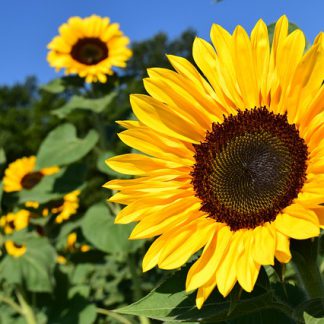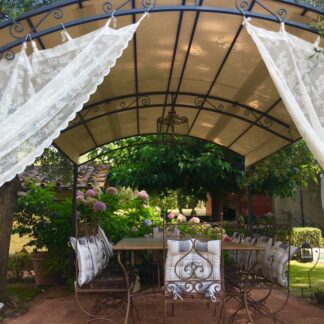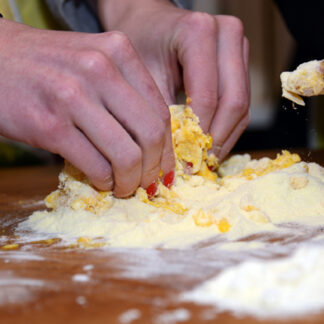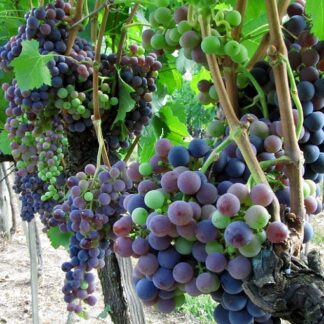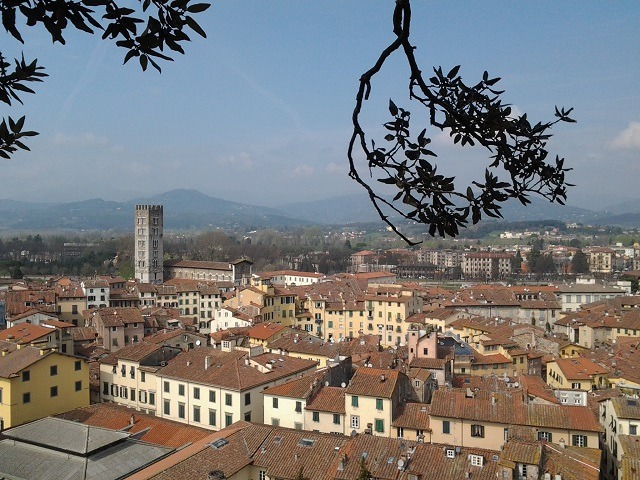
Lucca has long chosen to stay away from great history and the beaten path. As such, its
inhabitants did not hesitate to erect walls 12 meters high, 30 meters thick at the base, in order to
lock themselves up every night and at the slightest danger behind these bastions. Times have
changed. Today, its doors remain open, even at night and its inhabitants have become
accustomed to the passage of an ever-increasing number of tourists.
One thing is certain though: those who come to Lucca soon realize that this city is fascinating and
enchanting. In Lucca you don’t just come to discover masterpieces of the Middle Ages or the
Renaissance or to experience a certain history of Tuscany, but to also get a glimpse of the daily life
of the Lucchesi, who on bicycle, still do their shopping in small shops, from the baker or from the
butcher to other artisans which already served their parents, grandparents and those before them.
In Lucca, tradition is everywhere.
Here a list of what to discover:
Guinigi Tower
The Guinigi Tower is one of the most famous attractions in Lucca. Built in the 14th century, it is one of the few buildings from that times still standing. The presence of an open garden on the top of the tower, a real green oasis in the middle of the city, makes it unique.
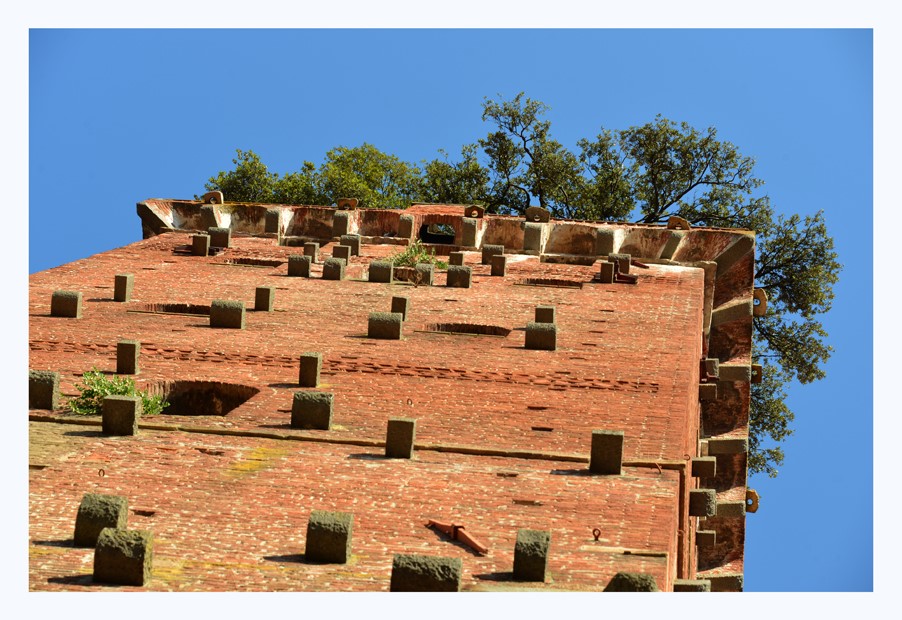
The garden offers visitors a breathtaking panoramic view of the old city and the surrounding countryside. The Guinigi Tower is a must-see monument in Lucca for sure.
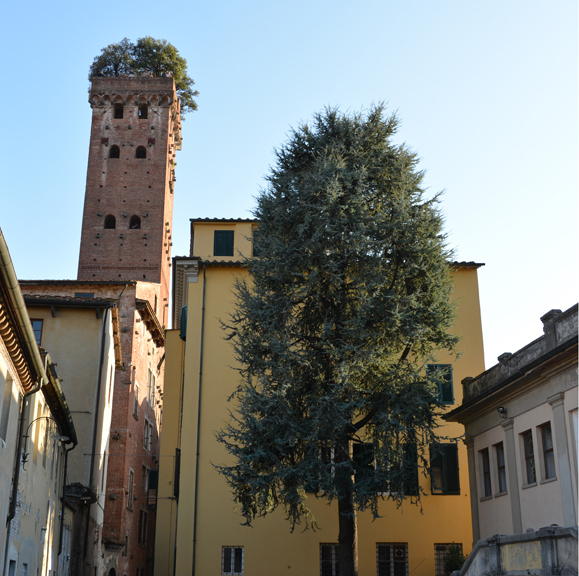
The Walls of Lucca
After 100 years of construction, the walls were finished in 1650 and are still intact. They were used
until the end of the 18th century by the soldiers who defended the city. The walls have since been
turned into a promenade overlooking the houses and gardens hidden behind them. You can
browse on foot or by bicycle, 1,800 trees provide shade in the summer.
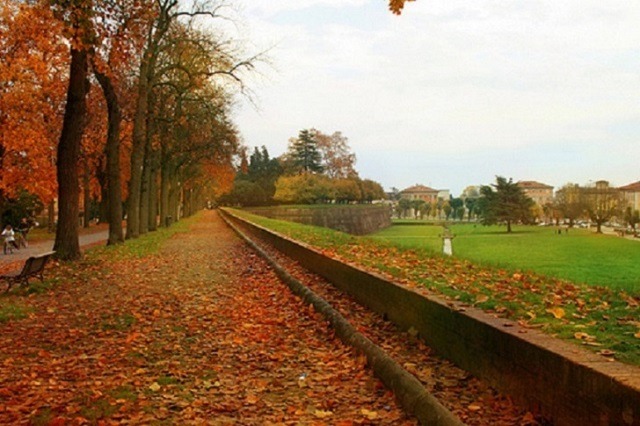
The Roman Amphitheater / Piazza dell’ Anfiteatro
The Romans founded Lucca in 180 BC. They built a beautiful amphitheater there. In fact, even
today the amphitheater square, which gets its shape from what was once the arena, is one of the
squares not to be missed during your visit to Lucca. There are quite a few nice bars with tables and
chairs outside to choose from to enjoy some local delights.
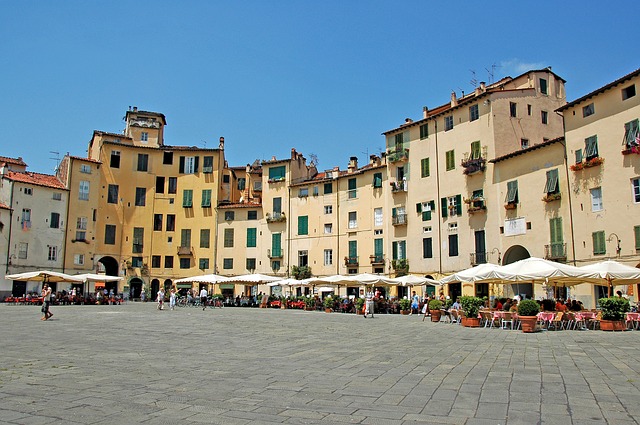
“The city of 100 churches”: San Martino, San Michele and San Frediano
Lucca is also called, “the city of 100 churches”, most of them in Romanesque style of white marble;
you will discover them, majestic as some important churches (the Cathedral, church dedicated to
San Michele or San Frediano), or smaller ones astride a street, with their treasures, paintings or
sculptures, paid for by the rich families of the city whose fortune came from the work and trade of
silk.
The Cathedral of Lucca is dedicated to San Martino, a saint revered by the Lombards. They
invaded Tuscany in the sixth century and made Lucca the capital of the Duchy of Tuscany. Founded
around 560, the Cathedral was enlarged and enhanced over the course of several centuries by
various artists, including Lombard ones, like a certain Guido di Como who made the facade in 1204
and immortalized himself there; look for him and you will find him on the first column to the right
of the first loggia, standing holding a parchment in his hand where he mentions his name and the
date of his work.
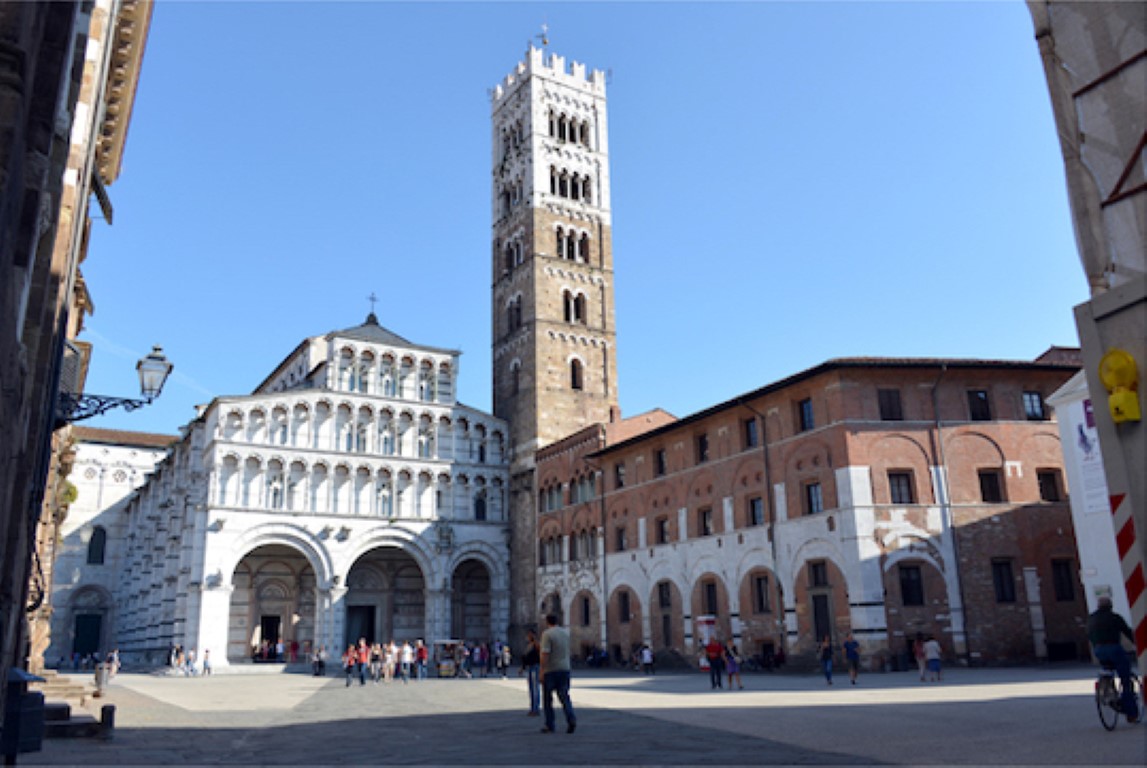
The interior of the Cathedral dates back to the 15th and 16th centuries: under the
dark blue sky of the vaults, you will be swept away by the magical atmosphere, by the magnificent
paintings that tell the life of Jesus and Mary, also by the very particular painting by Tintoretto, by
the mosaics on the floor leading to the sacristy. There, you will admire the tomb of Ilaria del
Carretto or in the cathedral other tombs or sculptures all done by a very talented architect, Matteo
Civitali. Lastly, you will discover the majestic temple, again from Civitali which houses the “Holy
Face”, an immense crucifix from the eighth century sculpted by Nicodemus, hence so valuable.
This holy relic deeply touched all the pilgrims who, using the Via Francigena, came from all over
Europe to go to Rome; they wanted and had to stop in Lucca to pray in front of him and ask for all
his love and his protection in an unfathomable and fleeting world. Even today it does not leave us
indifferent.
The church of San Michele stands on the central square of the city with a facade similar to that of
the Cathedral. It was in fact built by the same team of artists from Lombardy during the twelfth and
thirteenth centuries. Inside the choir hangs a beautiful painted cross from the twelfth century. You
will also find the intact body of an Armenian pilgrim who died in Lucca in 1050 at the age of 25, and
who was given the name of San Davino. There is a beautiful painting by Filippino Lippi with Saint
Helena and the lion of Saint Jerome, the only one that looks you in the eyes.
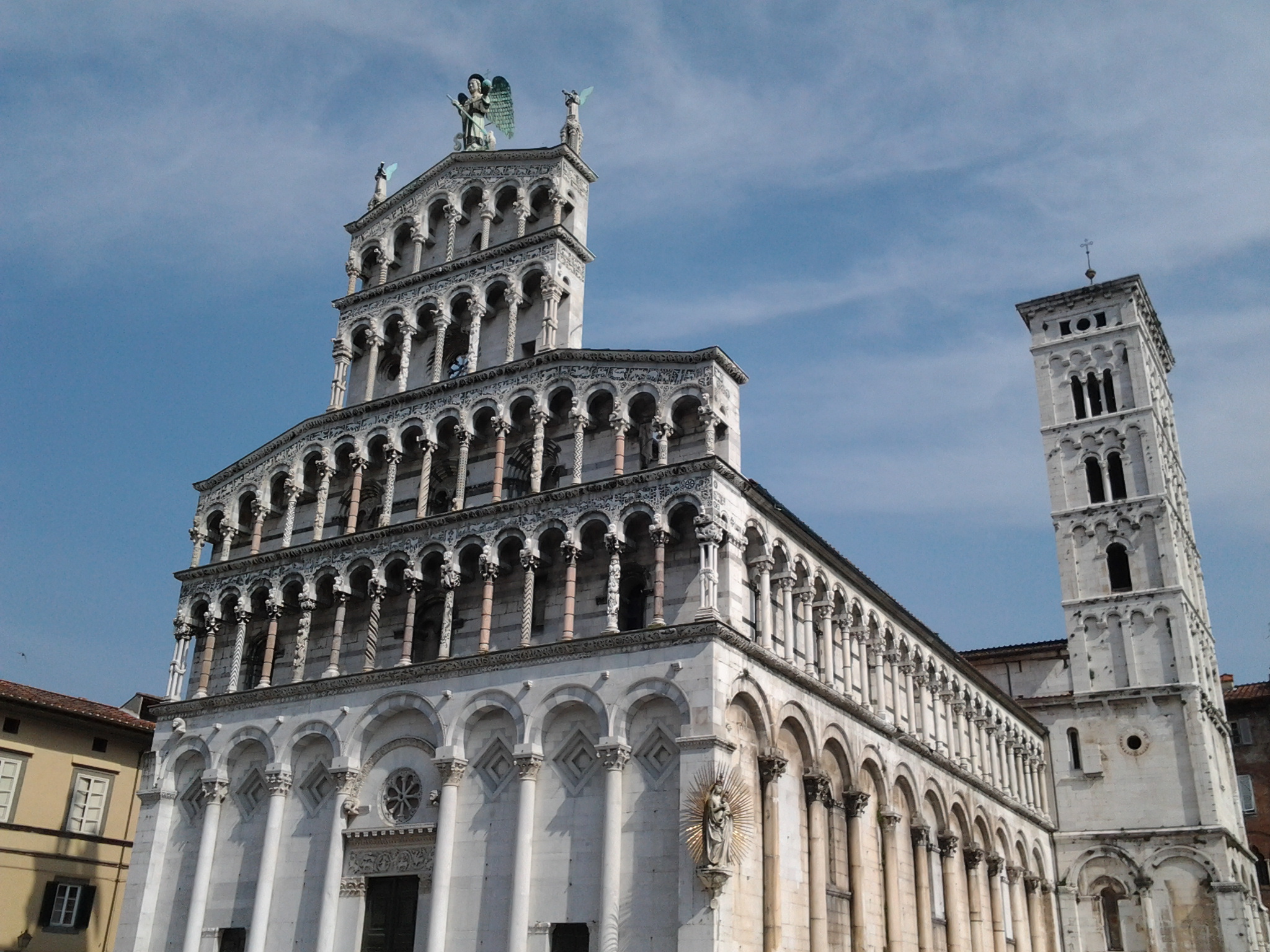
San Frediano: the basilica bears the name of its founder, Frediano, of Irish origin who was bishop
of Lucca for 28 years until his death in 588. It remains a particular church as it has no transept, its
entrance is to the east and it is one of two churches in Tuscany, with the church of San Miniato al
Monte in Florence, to have on its facade a mosaic from 1250 with Christ ascending in a mandorla
carried by two angels. Enter, immersed yourself in its silence, walk towards the side aisles composed of the various chapels sponsored by the noble families of Lucca: there is the chapel of the Buonvisi family, the richest family of Lucca, the chapel of the Trenta family, with the altar dossal and the earthen tombs of Lorenzo Trenta and his wife, made by Jacopo della Quercia.
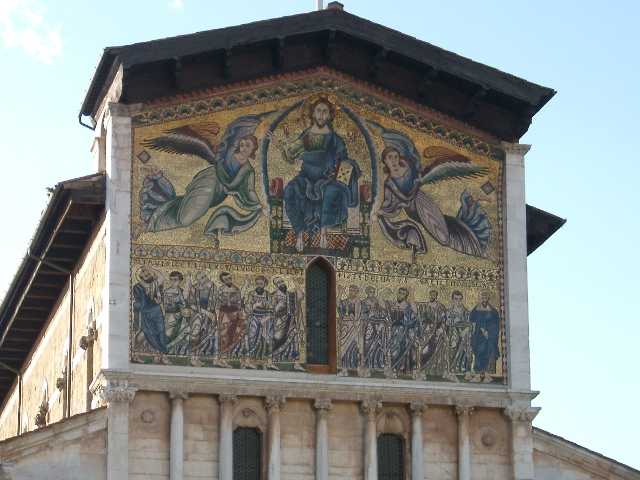
There is also the chapel of the Fatinelli family where the uncorruptible body of Santa Zita is kept. Also mentioned by Dante, the girl who arrived in Lucca at the age of 13 to serve in the home of the Fatinelli family, is also famous for being very generous with the numerous poor. The servant’s body is visible in a transparent sarcophagus and her clothes date back to the 18th century. Then, there is the Chapel of Saint Augustine or of the Cross with its frescoes made by the Bolognese artist A. Aspertini in 1508. Those await you in all their splendor, narrating the transport of the “Volto Santo” crucifix from Luni to Lucca and the life of Saint Augustine. The priests of the church of San Frediano were canons who followed the rule of Saint
Augustine. Finally, you will find a Romanesque baptismal fountain of the twelfth century, on one
side one of the artists left his name: Maestro Roberto.
The privilege of silk
Before silk became a fabric within the reach of more people and manufactured in many countries
of Europe, in the 12th century it was the privilege of kings and emperors and Lucca was one of the
first cities in Europe to produce and sell it.
The market squares
They are so many squares where very often a fountain was added in the 19th century to provide
the population with water. The squares bear names that speak of what was sold at the markets,
for example the court of eggs or fish.
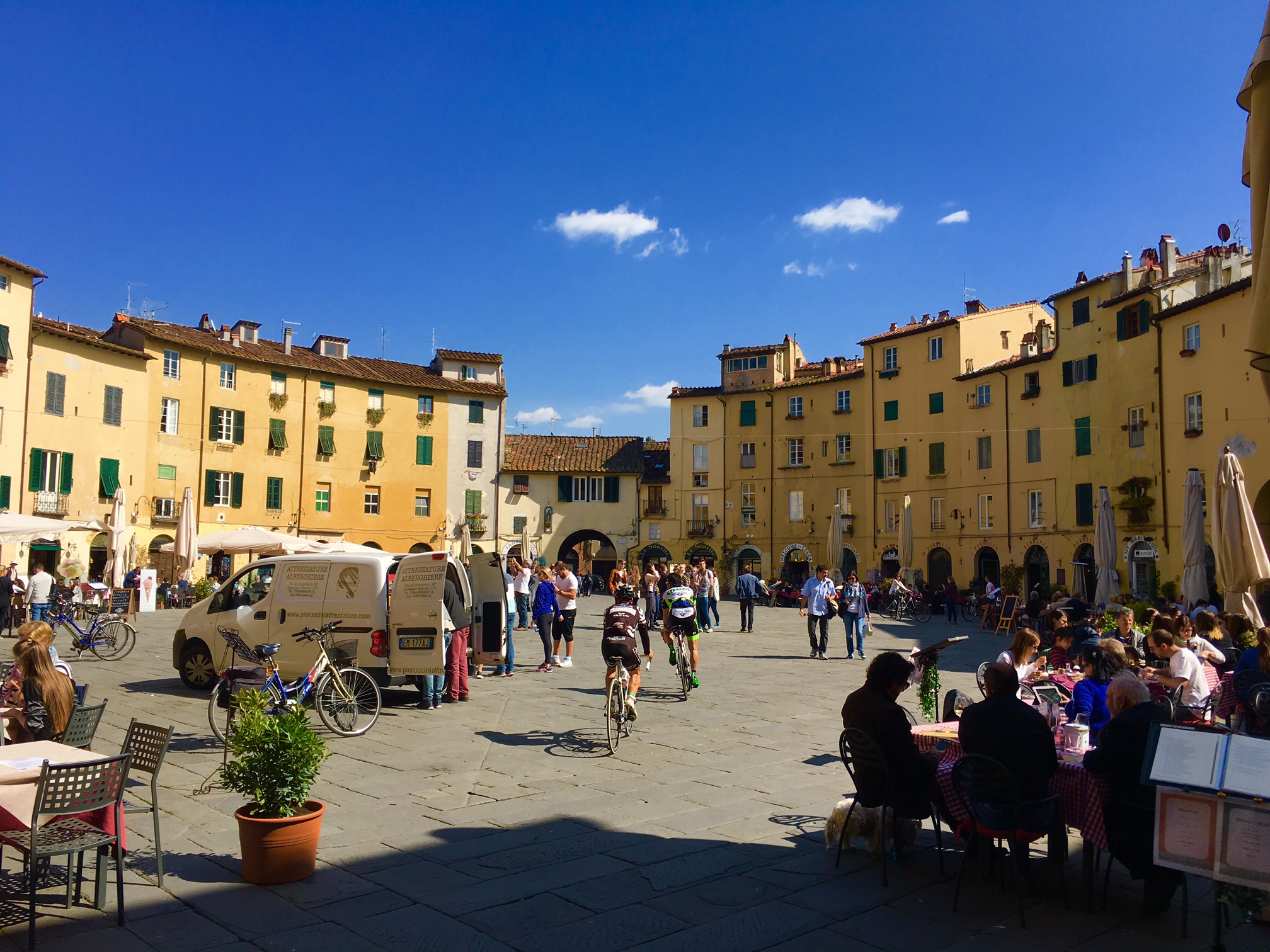 Napoleon Square
Napoleon Square
Napoleon during his rise to the coronation of emperor in 1810 placed his brothers and sisters at the
head of various kingdoms or states in Italy and Europe. In 1805, he sent his sister Elisa and his
brother-in-law Felice Baciocchi to Lucca. Until then Lucca had been an aristocratic republic relying
on the noble families of Lucca and the clergy; in a very short time, Elisa did not just carry out the
orders coming from higher up and from France, but she revolutionized the habits and life of the
inhabitants. The Doge’s Palace that you see today on the square became their residence and Elisa
dusted it off at the speed of light. To create a space in front of her balcony, she demolished all the
buildings on the square, the prisons, an immense church dedicated to St. Peter, the Post Office.
Although today this immense, airy square in the shade of its plane trees is called Piazza
Napoleone, for the Lucchesi it remains “Piazza Grande”. The skating rink is located there in winter
and concerts are organized in summer!
Giacomo Puccini’s birthplace :
And for opera lovers, you will follow in the footsteps of the great composer Giacomo Puccini, born
in Lucca in 1858. His house has been transformed into a museum and it is worth a visit.
Botanical Garden
Elisa Bonaparte Baciocchi barely stayed 9 years in Tuscany. She was an intelligent and cultured
woman with great projects in mind and the desire to modernize Tuscan society. The French
influence, its ways, its conquests, its philosophers, its history permeated her choices, not to
mention the influence of her sister-in-law the Empress Joséphine, Napoleon’s first wife. For the
garden of her house in Malmaison near Paris, Joséphine had original and exotic species brought
from all over Europe, from Australia, thus inspiring Elisa to do the same in Lucca and in her villa in
Marlia, outside the city. Although the botanical garden was officially founded in 1820 by Maria-
Luisa di Borbone-Parma, who arrived in Lucca after Elisa’s departure, it was actually Elisa who
launched its project. Today an oasis of peace and beauty, you will still find the cedar of Lebanon
planted in 1822 : the plant arrived from London, was planted in the botanical garden of Pisa and
from one of its seeds the cedar we have now in Lucca (now with a circumference of over 6 meters)
was born while the one in Pisa is no longer there; there is also a pond where the beautiful Lucida
Mansi is said to have drowned, greenhouses with tropical plants, coffee, bananas, ficus, etc. and
also a path for the blind.
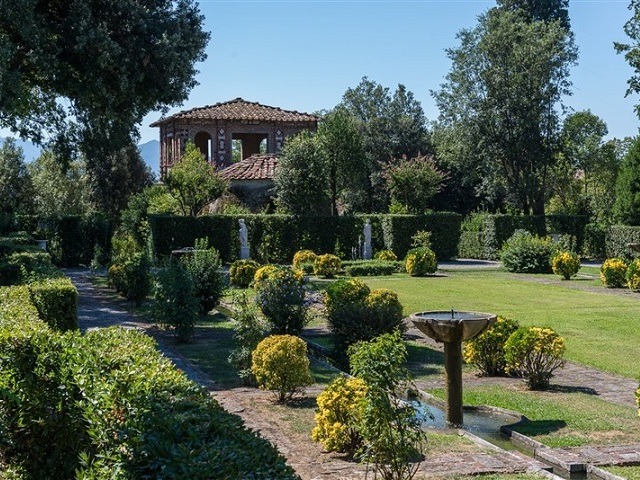
During the sixteenth century the rich families of Lucca saw their profits decline from the sale of silk
and from banking practices and they decided to invest in these “palazzi in villa”; there are over 300
on the hills around Lucca, two of the most beautiful are the Elisa Bonaparte Baciocci’s villa called
the Royal Villa and the other one is the Villa Torrigiani.
Royal Villa/ Villa Reale
Within her prerogative, Elisa was to have a palace in the city and a villa in the countryside. She set
her sights on the villa that today bears the name of Villa Reale in Marlia, and after forcing its owner,
Lelio Orsetti (the Orsetti had bought from the Buonvisis in 1651), to sell it, she undertook, as she
had done in Lucca, to transform the villa, its outbuildings and its park. This villa was one of the
villas she liked best, she loved staying there, being surrounded by artists like Paganini, playing
theater roles in the small green theater, playing billiards. Today, you can visit the interior of the villa,
discover her bedroom, the ballroom, the Empire-style decorations or stroll in the park of over 16
hectares, a magical moment in the silence of nature, along the magnolias path, or towards the
cave of Pan, one of the oldest nymphaeum of the villas of Lucca or the lake where superb black
and white swans lived in Elisa’s time.
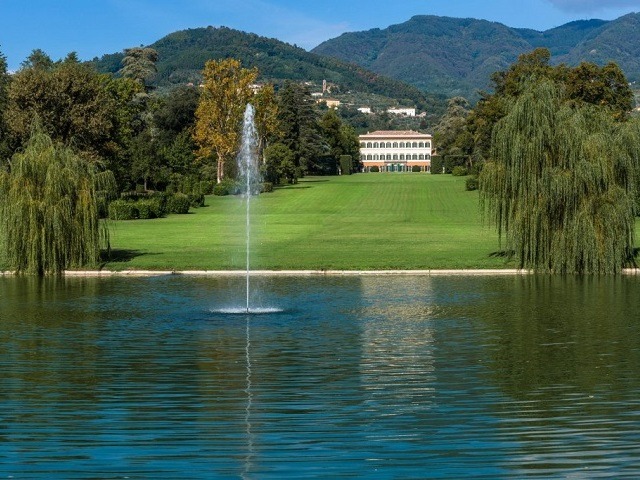
Villa Torrigiani
It is a villa that has some peculiarities: among other things, it is one of the rare villas still in the
hands of the same family, the descendants of Nicolao Santini who bought this villa from the
Buonvisi family around 1560. Moreover, it has a magnificent Baroque facade, something very rare
fact in Lucca’s villas. It was Nicolao Santini who had wanted it in this style. He had been
ambassador of the Republic of Lucca to King Louis XIV and certainly the architecture of Versailles
inspired him. It is also said that he asked the famous architect of the gardens of Versailles, André
Le Nôtre, on his return from Rome to stop at the villa to advise him on how to design the garden. In
1816, Vittoria Santini married Pietro Torrigiani, hence the name of the villa today. Simonetta
Torrigiani married in 1937 the Prince of Stigliano, Don Carlo Colonna, his son Fabio Marzio
Colonna is the current owner.
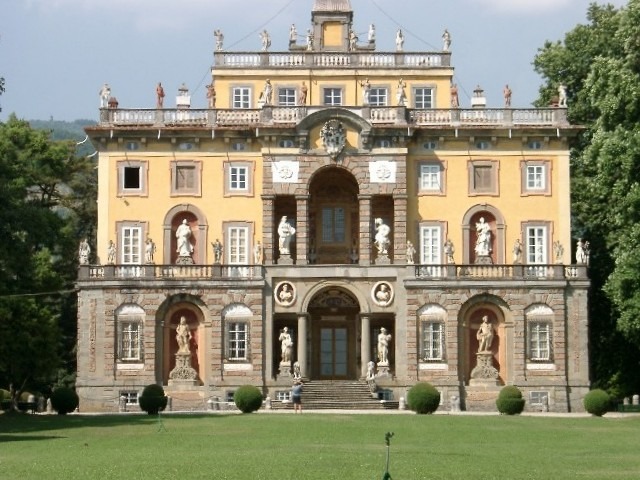
You can visit the interior of the villa with its magnificent frescoes of 1715 that were never restored,
see the bed of Nicolao Santini, the one with whom it all began, and also visit the garden with its
Flora garden or its Nymphaeum of the Winds and the superb fishpond.
So, come to Lucca and leave behind time, the hectic life of our modern world and let yourself be
captivated!

